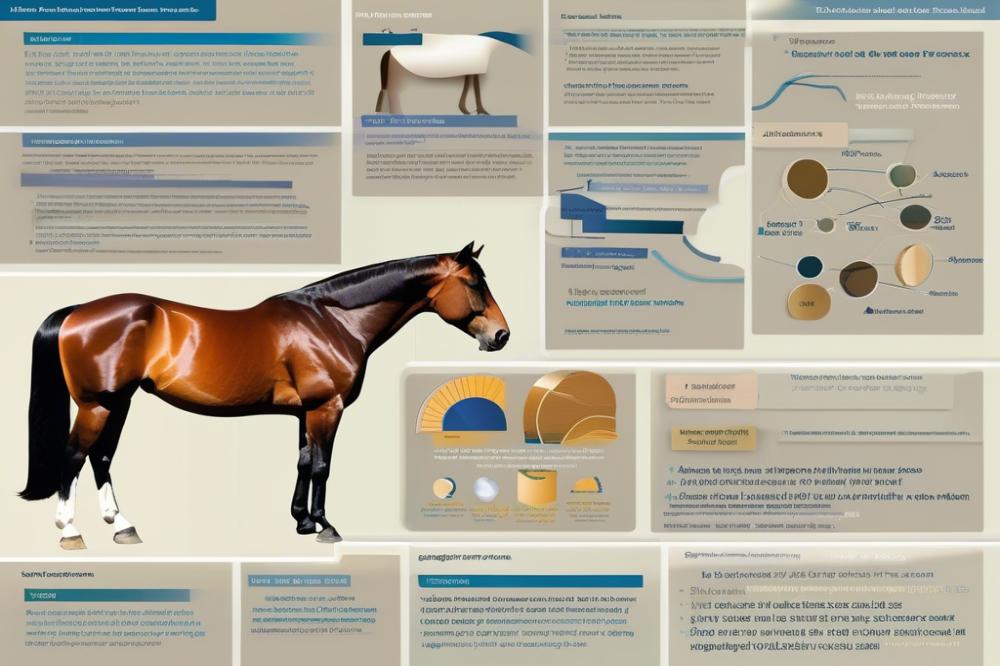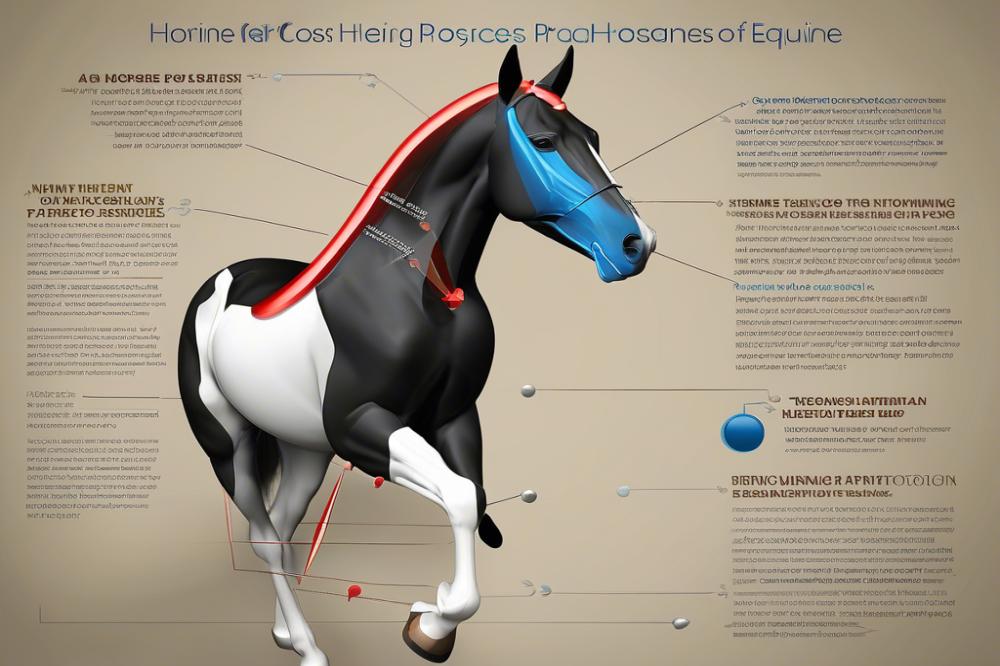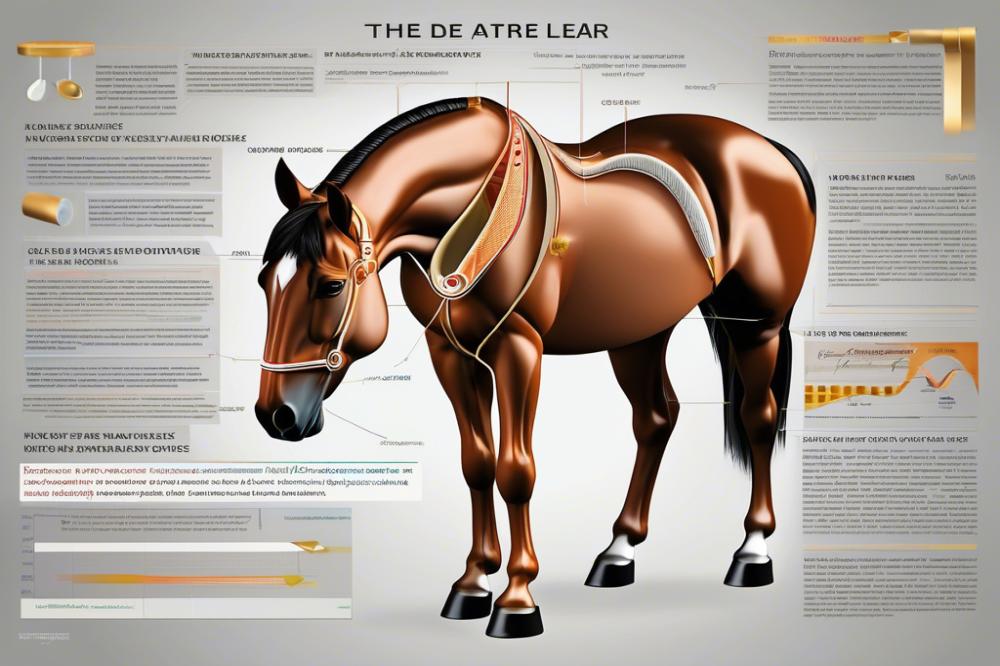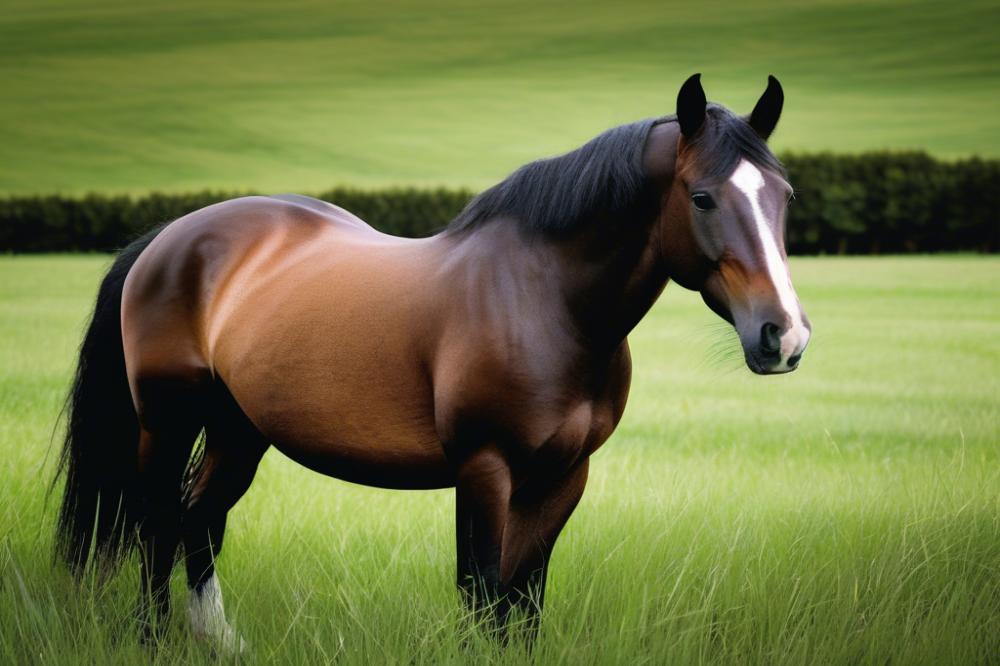Exploring the Science of equine hearing
Understanding how horses process sounds provides remarkable insights into their behaviors and natural instincts. The ears of these majestic animals operate not just as instruments of hearing, but also play pivotal roles in communication and survival. In the wilderness, a horse’s ability to detect predators or recognize the rustling of leaves can mean the difference between life and death.
equine hearing possesses fascinating capabilities. Not only can horses discern a broad spectrum of frequencies, but they also have an exceptional directional hearing. This allows them to pinpoint the origin of sounds with impressive accuracy. The ears, which can rotate independently, contribute to this remarkable auditory skill. As a result, equine sound perception is essential for social interactions among herd members.
The anatomical structure of a horse’s ear plays a crucial role in sound processing. Comprised of several parts, each section works together to capture and interpret vibrations from the environment. The inner ear translates these vibrations into messages that travel to the brain. The complexities of horse sound perception enhance their comprehension of surroundings, supporting their instincts and feelings.
As social creatures, horses respond to sounds in ways that reflect their emotions and state of mind. For instance, a sudden loud noise can trigger a flight response—an instinctual reaction designed to protect them. More subtle sounds, such as the affectionate nickers of a companion, can evoke feelings of safety and companionship. Through such auditory interactions, these animals establish relationships and navigate their social world.
In essence, while horses may not understand sound the same way humans do, their auditory system reveals profound insights into their lives. Observing how they react to different noises enriches our understanding of equine behavior. For anyone passionate about these beautiful animals, studying their auditory capabilities opens a door to a deeper appreciation of their complexity.
Intrigued about how horse sound perception works? Learn more about the intricacies of horse sound perception to explore further into their world.
To delve deeper into how sound impacts equine communication and behavior, read more about equine hearing.
Understanding Equine Hearing

The auditory system in horses is remarkably intricate. They possess ears that are capable of rotating independently. This fascinating feature allows them to pinpoint the source of sound with incredible accuracy. Horses can hear a wide range of frequencies, from low rumbles to high-pitched sounds. Their hearing range often exceeds that of humans, making them particularly sensitive to various auditory cues in their environment.
In terms of ear physiology, the external structure of a horse’s ear resembles a funnel. This shape efficiently captures sound waves and directs them toward the ear canal. The pinnae, or outer ears, can swivel in different directions. This movement enables horses to better locate sounds, whether it be the rustle of grass or the distant wail of a predator. The inner ear contains delicate structures that are vital for interpreting the vibrations differing frequencies create.
Comparing the ear structure of horses to other animals reveals interesting distinctions. For instance, the ears of a dog are highly mobile but lack the extensive range of motion seen in horses. Cats, too, have impressive hearing capabilities, yet their ear funnel design is not as pronounced as that of equines. Each animal has evolved its auditory features based on ecological needs and survival instincts. Horses, with their unique setup, can hear sounds that may signal danger or alert them to potential mates long before they come into view.
It is also worth noting that horses process certain sounds differently than humans do. While humans may focus primarily on rhythm and melody, horses respond more to the timbre and intensity of the noise. This ability shapes their reactions to various situations. A horse may perceive the sound of a creaking gate differently than a human, interpreting it as either a potential threat or merely the wind at play.
Moreover, the position of their ears allows horses to communicate with one another. Lowered ears may signal submission, while pricked ears indicate alertness and interest. These subtle messages enhance their social interactions. As anyone with experience around horses knows, their listening skills play a crucial role in understanding herd dynamics.
Sound Characteristics and Hearing Range

When it comes to understanding how horses process sounds, one must first grasp the significance of sound frequency. It serves as the backbone of auditory perception. Sounds travel in waves, and their frequency—measured in hertz (Hz)—determines whether they are perceived as low rumbles or high-pitched whistles.
Intriguingly, horses possess an impressive capacity for recognizing various sound types. They can distinguish between a soothing voice and a sharp command. Their ears swivel independently, like radar dishes, allowing them to hone in on specific noises. This ability helps them gauge their surroundings and react accordingly. Think about how a child instinctively knows when to perk up at the sound of a rustling bag of treats.
The Horse vs. Human Hearing
The spectrum of sounds that horses can hear exceeds that of humans, a fact that highlights their extraordinary auditory system. Most people can hear between 20 Hz and 20 kHz. Horses, on the other hand, have a hearing range that stretches from about 30 Hz to nearly 40 kHz. Imagine a concert where you can’t hear the high notes of the piano, while your equine companion is picking up the faintest chirp of a cricket in the distance.
Low frequencies, such as thunder or the deep rumble of a truck, resonate within their capabilities. These sounds can evoke a variety of reactions, from curiosity to alarm. In contrast, horses excel at catching high-frequency sounds, which can include the rustling of grass or the chattering of birds. This ability plays a critical role in their survival, helping them detect potential threats lurking in the tall grass.
Hearing extends beyond mere survival; it influences communication among equines too. Horses communicate through nickers, whinnies, and even silent gestures. The subtleties of these sounds convey emotions and intentions, allowing them to form social bonds within their herd. Some whinnies express excitement about feeding time, while others signal distress. The nuances are as distinct as the shades in a painter’s palette.
Noise Sensitivity and Environmental Awareness

Horses are remarkably sensitive to sounds in their surroundings. Their large, mobile ears can swivel like radar dishes, picking up even the faintest rustle of leaves or the distant rumble of thunder. This acute auditory perception is essential for detecting potential threats, making them highly aware of their environment. Assessing noise levels becomes a critical part of their daily life, and each sound can trigger a reaction ranging from simple curiosity to outright panic.
Environmental sounds significantly influence how horses behave. A sudden loud noise, such as a car backfiring or a branch snapping, may lead a horse to bolt or shy away. Consider the horse that startles at the sound of a plastic bag. Scared and unsure, it may leap sideways, reflecting an instinct that has developed over thousands of years. Adverse noises can lead to stress, causing changes in behavior, appetite, and even overall well-being.
This heightened sensitivity isn’t merely an inconvenience; it serves a purpose. Horses rely on their ability to differentiate between familiar and unfamiliar sounds for survival. The rustling of grass indicates an approaching predator, while the sound of their owner’s voice may signal safety. Ears flicking back and forth can indicate alertness and readiness to respond to changes in their surroundings. It’s all interconnected. Each sound offers information that a horse must quickly synthesize to navigate its environment effectively.
Adaptations in auditory processing equip these creatures for life in the wild. Horses possess a particular ability to hear a broader range of frequencies compared to humans. This unique auditory capability allows them to catch sounds we may not even notice. In the wild, this could mean the difference between life and death, as they detect subtle cues in their habitat that indicate danger.
Moreover, certain sounds have emotional connections for horses. Just like humans sometimes shiver at the sound of a thunderstorm, horses may react similarly when they hear a specific noise tied to a negative experience. A traumatic event tied to a particular auditory cue can lead to lasting effects on behavior. Understanding this interplay between sound and emotion helps caretakers create a calming environment for their equine companions.
In essence, sound is not just noise to a horse; it is a language of survival. Each whinny, snort, or stomp serves as communication, while environmental sounds are constant reminders of the world around them. By interpreting these auditory signals, they navigate their lives with an awareness that brings a deeper understanding of their challenges. As horse owners, fostering an environment that considers these auditory sensitivities is key to nurturing their well-being.
Sound Localization and Communication
When it comes to sounds in their surroundings, horses possess remarkable abilities for localization. Their ears can swivel independently, allowing them to pinpoint the origin of a noise with impressive precision. This ability resembles a radar system—each ear acts like a satellite dish, rotating to capture sounds from various angles. Distant rustles in the grass or the faintest whisper of an approaching predator can be detected. This acute awareness of their auditory environment helps horses navigate an ever-changing world of sounds.
Effective communication among horses relies heavily on their hearing capabilities. Vocalizations play an essential role in expressing feelings and intentions, enhancing social bonds. Whether it’s nickering, whinnying, or even stormy snorts, each sound has a distinct meaning. A cheerful whinny might be an invitation to socialize, while a sharp neigh could signal alarm. Horses communicate not only through sound but also by interpreting nuances in one another’s auditory signals. This dynamic can shape relationships within herds.
Interactions within a herd demonstrate how important auditory cues are. Within a large social group, understanding sounds becomes vital for harmony. Horses often rely on vocal signals to maintain group cohesion, especially in the face of potential threats. For instance, when one horse raises its head and lets out a commanding call, the herd responds accordingly. These auditory interactions engender trust and ensure safety. In times of distress, a soft whinny can reassure others, while a sudden call can stir group alertness, rallying them together.
The impact of auditory perception on herd dynamics is profound. Each horse has learned the subtleties of sound; they know which calls belong to friends and which might belong to foes. This intricate web of communication fosters cooperation and social order. Thus, the ability to localize sound directly influences how horses interact with one another. In the wild, their very survival depends on these finely tuned skills. Horses rely on their hearing to navigate complex social landscapes filled with emotional undertones.
A playful moment arises when one might observe a group of horses at play, exchanging whinnies and nuzzles. The air vibrates with their chatter, a delightful melody only they entirely understand. In this symphonic exchange, each horse reads the mood from the sounds made. Such interactions are not mere frolic; they showcase the depth of their mutual understanding. Communication channels vary widely, resulting in a rich tapestry woven through sound.
Overall, sound localization and communication form the backbone of the social life of horses. Listening is just as important as vocalizing. From detecting potential dangers to nurturing friendships, the way horses process sound reveals the intricacy of their relationships with one another and their environment. When observing a herd, one sees more than just horses; they become witnesses to a veritable orchestra of interactions, each sound carrying significance.
Auditory Processing and Behavioral Implications
Integration of auditory information in equine behavior
Horses possess an impressive ability to integrate sounds into their daily lives. While grazing in a pasture, they are constantly attuned to the rustle of grass, potential threats, and even the faint whispers of their herd mates. This auditory awareness plays a significant role in how they navigate their environment. A sudden loud noise, for instance, can trigger a flight response, which is deeply rooted in their survival instincts.
Every sound carries meaning for these animals. The whinny of a fellow horse may signal excitement, while the clatter of equipment could evoke anxiety. Understanding this auditory landscape is vital for horse owners, trainers, and handlers alike. Observing how a horse reacts to varied sounds can guide interactions, helping humans refine their approach based on the horse’s comfort level.
Influence of sound perception on training and handling
Training methods can significantly benefit from insights into equine sound processing. For instance, certain vocal cues or tones can enhance communication between horse and handler. A soft, gentle voice can soothe a nervous horse, while a sharp, loud command may provoke anxiety. Recognizing this distinction is critically important during training sessions. Horses learn not just from gestures but also from the acoustics surrounding them.
Moreover, social bonding can be enhanced through vocalization. When interacting, trainers can adopt specific sounds to create positive associations. By doing so, they establish a language of sorts, allowing for a deeper connection between human and horse. The right sound can transform a training session from stressful to enjoyable, with mutual respect developing in the process.
Considerations for noise management in equine facilities
Managing noise levels in stables and training areas is essential for maintaining a calm environment. Horses can become stressed by persistent, disruptive sounds, such as machinery or loud conversations. Implementing strategies to reduce unwanted noise can lead to improved welfare and performance. Simple sound barrier installations or quiet zones can create sanctuary-like spaces, allowing the horses a break in their day.
In addition, being mindful of the horses’ auditory range can help handlers mitigate stress. For example, music that is soothing might alleviate tension during grooming or tacking up. On the flip side, exposure to sudden, intense sounds can lead to behavioral issues, including reactivity. It’s prudent for equine facilities to foster a sound-friendly space, ensuring a symbiotic relationship between horses and their environment.
Understanding the intricacies of how these animals perceive sound improves not only their training but also their overall well-being. By prioritizing their auditory needs, handlers can cultivate a space where horses can thrive.
Understanding the Depth of Equine Auditory Abilities
Insights into the ways these majestic creatures process sound reveal a depth that often goes unnoticed. Horses possess an incredible auditory system that allows them to detect a wide range of frequencies. This heightened sensitivity extends their awareness far beyond the capabilities of most animals. Different sounds can evoke various responses, prompting a reaction that is as instinctive as it is precise.
Lessons from the world of horses indicate that their ability to distinguish subtle differences in tones plays a crucial role in their social interactions. Both the nuances of voice and unfamiliar noises can sway their behavior. For instance, a comforting whisper can soothe a skittish foal, while the crack of a branch might incite fear. Emphasizing the bond between sound and emotion, researchers have noted how these animals rely on auditory cues to navigate their environment.
At a glance, one may believe that sound processing is a simple task. Digging deeper reveals the layered complexities involved. The way a horse pivots its ears towards a noise illustrates its innate curiosity. Each flick and turn signifies an investigative endeavor, demonstrating a perceptual agility tailored for survival. Understanding the role of sound frequency in communication sheds light on their unique ways of interpreting the world. Click here for more on this fascinating subject.
Research continues to uncover just how remarkable their hearing is. While humans might overlook the quiet rustle of leaves or distant calls, these animals grasp the significance of every sound in their milieu. By listening closely, they connect with their surroundings, whether it’s a friend calling or a predator lurking in the shadows. Such acute awareness is a testament to their evolutionary history, crafted over ages to thrive in varied landscapes.
Equipping oneself with knowledge about equine sound processing can enhance interactions with and training of these remarkable animals. Those who take the time to understand their auditory world can forge stronger bonds and ensure a more harmonious partnership. To further explore how horses interact with their environment, consider diving into the intricacies of their auditory system.
As we round out this exploration into equine auditory capabilities, it becomes clear that sound is not merely a series of vibrations in the air. Instead, it is a rich tapestry woven into the lives of horses, infused with meaning, emotion, and instinctive response. Harmonizing with their auditory language not only enriches our experiences but also deepens the relationship between horses and humans. As you reflect on these insights, consider taking a definitive step further into the fascinating world of equine science by signing up for our service here.



